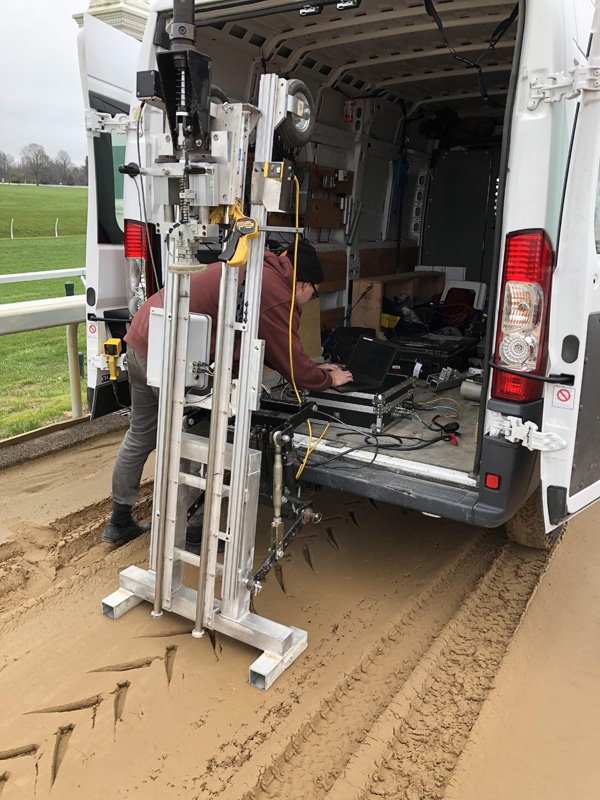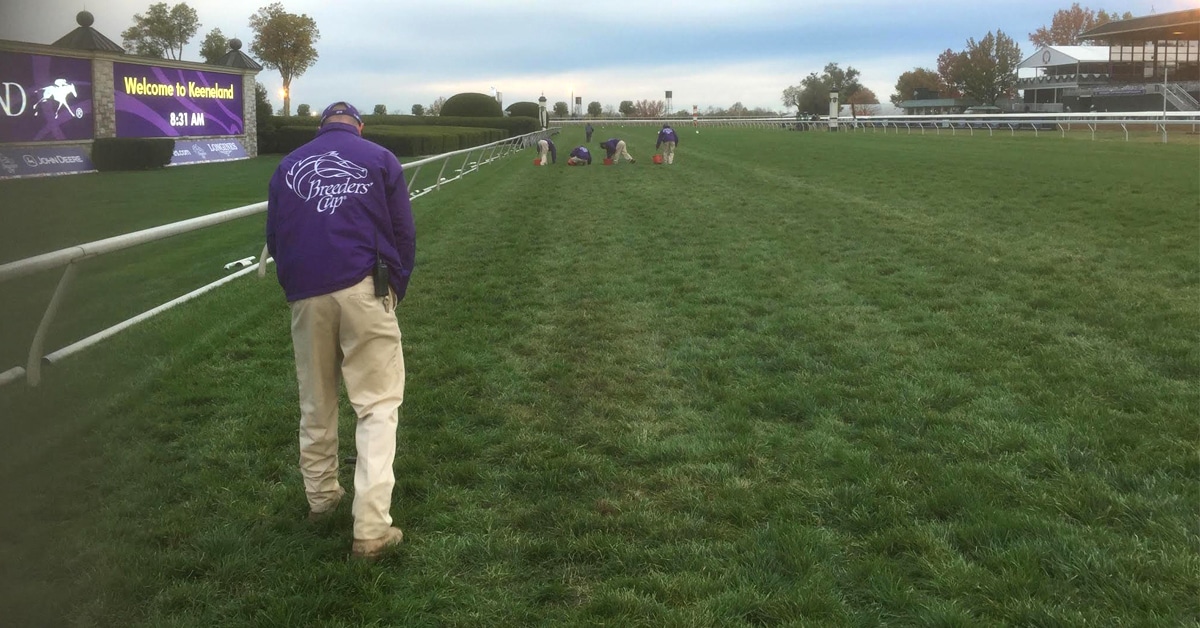Thanks to the recent investment from The Jockey Club, the Lexington-based Racing Surfaces Testing Laboratory is becoming more efficient at the inspection of racing surfaces prior to the start of every race meet. The gold standard for safety is consistency and these inspections are a critical step toward improved consistency.
The intent of the pre-race meet inspection is to ensure that with the track properly prepared, the surface is consistent between years and, when possible, also between different tracks. This consistency reduces variation, both around the track and between tracks, and ensures that annual maintenance has been performed.
However, keeping a consistent surface requires daily maintenance as well as watering of turf and dirt, aeration of turf surfaces, grading of the dirt surface, harrowing and, in some cases, tilling of synthetic surfaces. This daily maintenance is critical to keeping the surface in the same condition at the finish of the race meet as at the start.
The inspection is undertaken prior to the start of the race meet, with the surface prepared for racing like it would be done on a normal race day. As a critical part of what’s called the Maintenance Quality System program, race meet inspection involves the use of the Biomechanical Surface Tester consistent with the ASTM standard for testing of surfaces as well as ground penetrating radar and material testing.
Because of the many variables involved in maintaining the track – most importantly water for dirt or turf tracks or temperature and age for synthetic tracks – daily measurements are required to ensure that the surface is consistent for horses and riders, thereby also providing the safest possible surface to compete upon.
Currently, commercial instruments are used for the measurements, including the Going Stick, a tool developed by TurfTrax in England for measuring the turf, and a time domain reflectometry moisture probe for measuring moisture on the dirt or turf.
Perhaps the most time consuming of the critical daily measurements is the depth of the dirt track cushion, which still relies on a ruler placed into the track and careful visual measurements.
Presently no tool has been developed which is well-suited for testing of synthetic tracks on a daily basis.
Current tools that are used require a very large investment of time, with as much as three hours of labor required to take and upload the data and to document the maintenance of the surface every day. Furthermore, none of the commonly used tools, including the moisture probe and the Going Stick, acquire GPS coordinates. This means the person taking the measurement has to be meticulous about taking data in the same location every day and if there is an area of concern, like a dry area of the turf track, it may not be included in the data set.

The Orono Biomechanical Surface Tester (OBST) is used prior to each race meet to duplicate the loads and speeds of the forelimb at a gallop. (Photo courtesy Dr. Mick Peterson)
One of the most recent areas of concern is the impact of salinity from irrigation water on the accuracy of moisture meters. Without proper correction of the moisture meter to account for soil salinity, widely different values of salinity can be measured using many of the tools, which can lead to misleading data.
To address this gap in technology, Racing Surfaces Testing Laboratory is working with UK research efforts to develop a new tool, called the Lexington Penetrometer.
The new integrated racing surface tester is designed to be more effective for the measurement of the daily condition of the racing surface. This instrument employs the same principle of surface measurement as the Longchamp penetrometer, a standard tool developed in France to use on racetracks. In addition to using an electronic version of the Longchamp penetrometer, there is a sophisticated commercial moisture and salinity measurement sensor that is integrated with a GPS sensor, allowing the location of each measurement to be logged. Data is sent in real time to a relational database for storage and display.
The current prototype inspection tool will be used in research led by UK and the National Thoroughbred Racing Association Surfaces and Safety Laboratory associated with UK Ag Equine Programs.
While the first use of the new device will be to measure moisture, the penetration resistance of the turf adaptation to other surfaces is also ongoing. In particular, the device has already been modified to allow the same mechanical system to be used to measure cushion depth and moisture on a dirt racing surface. A flexible low power network will then allow this data to complete with location and time data to be displayed on a smart phone for real time data for the support of maintenance decision making.
Reprinted with permission University of Kentucky Ag Equine Programs


